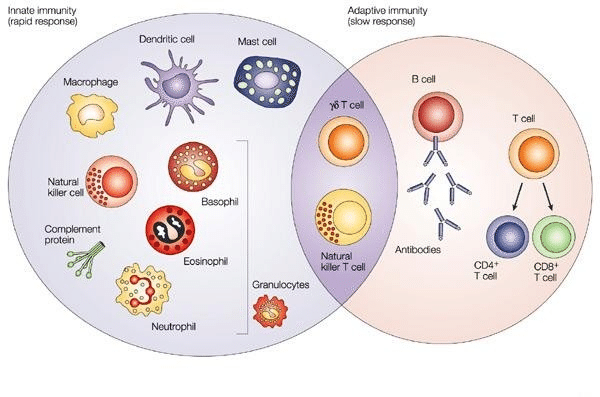Summary
Light therapy is a non-invasive therapy that works by increasing the ability of the cell to create energy (ATP) to heal the area being treated. As a result, it can decrease inflammation, swelling, and pain in the area. Research in this area is expanding, with more in-depth research papers linked below for those who would like to learn more.
HIstory
Light therapy has been around for thousands of years and has been practiced in India and is seen in the Hindu texts (News Medical, 2018). In modern days, we still use light therapy, in cases like jaundice for babies, when they receive blue-green light spectrum therapy to help eliminate the excess bilirubin (Mayo Clinic, 2020). There is even evidence that shows that ultraviolet light therapy works on conditions such as eczema and vitiligo (Berthold E, 2019).
History of low-level light therapy
Experiments were testing Low-Level Light Therapy (LLLT) - or photobomb modulation as it is often referred to now - after the invention of the ruby laser in 1960. In the first experiment, Dr. Endre Mester, used shaved rats and observing how the laser affected their ability to grow hair compared to the group that was not receiving LLLT. He found that the group of mice receiving LLLT were able to grow their hair back more quickly than the group of mice that didn’t receive LLLT (Hoon C, et al; 2012). In a separate experiment involving mice, he also noticed that LLLT helped to stimulate wound healing. Dr. Mester started to apply these LLLT findings on humans, for nonhealing skin ulcers.
mechanism of action
The word Laser came about as an acronym for Light Amplification by Stimulated Emission of Radiation. The energy released from the photos in light is referred to as electroluminescence - most of which is absorbed by the tissue and is responsible for the effects (Hoon C, et al; 2012). Though the mechanism of action is poorly understood; what the research has shown is that LLLT works in the cell’s mitochondria to generate more energy or ATP, modulate Reactive Oxygen Species (ROS) (which can cause damage to cells), and induce transcription factors (Hoon C, et al; 2012). It has been observed the LLLT has a wide range of effects at the tissue, cellular, and molecular levels, causing an increase in cell number and movement, modulation of cytokines, growth factors, and inflammatory mediators, and an increase in tissue oxygenation (which is different from creating ROS) (Hoon C, et al; 2012).
Basically, LLLT has been seen to speed up healing by creating more energy in the cells, which affects molecular, cellular, and tissue processes by giving them fuel; and increases the body’s ability to decrease inflammation, swelling, and decrease pain through its ability to interact with messengers in the body.
Low-Level Light Therapy (LLLT)
This therapy is termed this way to differentiate the difference between the lasers some professions use to cut (eg. in surgeries, or dental procedures). Low-level light therapy is painless, non-invasive treatment. It is used to decrease inflammation, swelling, and chronic joint disorders, reduce pain and accelerate wound healing of nerves and tissues (Hoon C, et al; 2012). In more recent literature, they have changed the term to photobiomodulation therapy, but I’ll be using LLLT for this article.
LLLT has a biphasic response, meaning that lower doses are generally seen to be more beneficial than higher doses. That being said, doses higher or lower than the optimal dose doesn’t affect (Hoon C, et al; 2012). For this reason, it can be difficult to have studies on LLLT with so many parameters. However, what has been seen is that wavelengths between 600-1200 nm have shown benefit in the studies (Thunshelle C, Hamblin M.R; 2016; Huang Z, et al; 2015). So it becomes important to know if the machine that is treating you is providing these wavelengths.
It has also been shown that LED treatment with similar wavelength and parameters to low power lasers produced similar results to LLLT (Hamblin M.R; 2016). Migliario M, et al (2018) noted that red and near-infrared portion of the light spectra can be used for biostimulation, and promote cell survival and multiplication. This was awesome news because that means a larger area can be treated, than just the narrow space that a laser can treat at a time. Some companies combined the two (LED and laser) to provide a more well-rounded treatment since lasers can penetrate deeper than LED and infrared light (Norman Doidge, The Brain’s Way of Healing, 2015).
During treatment, the area that is being treated is exposed to LED light from a BioFlex Laser, which is at 660 nm wavelength, followed by infrared light at 830-840 nm wavelength. Our naked eyes do not see infrared light, so it looks like the machine has turned off - but it hasn’t (fun fact: your cellphone camera can see infrared light). These wavelengths are important because these wavelengths have been seen to be absorbed more by our mitochondria.
LLLT has been used for various conditions, and some awesome studies are displaying their benefits for certain conditions. Below, I will list what has been studied, along with the link to go to the actual study if you wanted to read more about it. Note that there are most likely other conditions that can be treated, and haven’t yet. The research is still expanding!
Arthritis
Chronic pain
Lower back pain
Nipple pain in breastfeeding
Oral Mucositis
Shoulder tendinopathy
Stroke
Traumatic Brain Injury
Happy LASERING!
~ Dr. Charmagne









